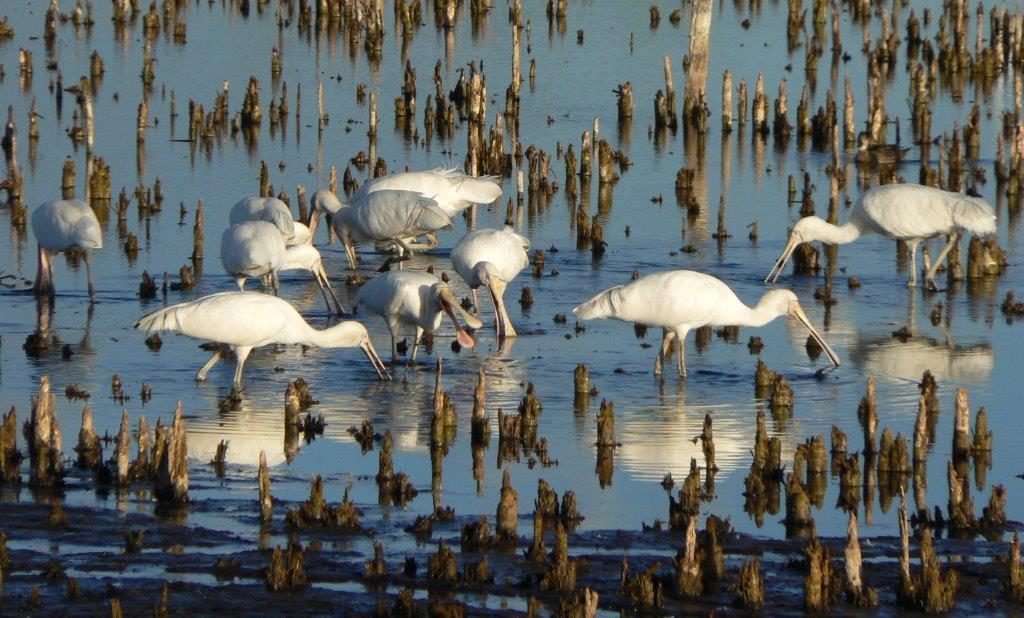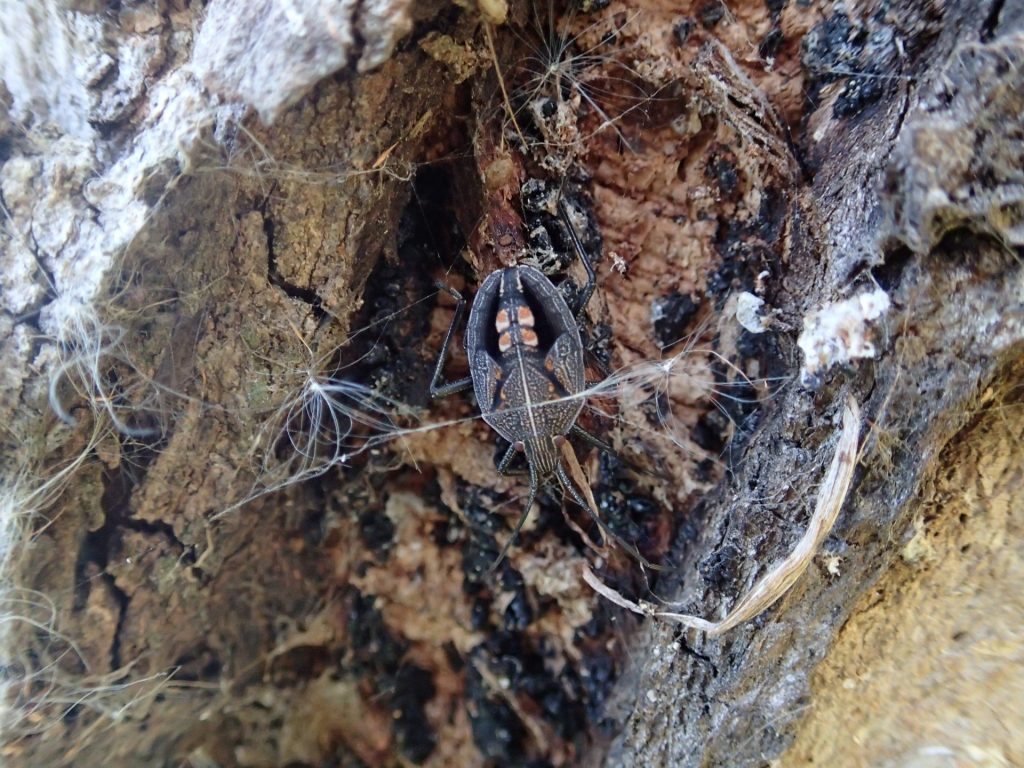NORTHERN SUBURBS BRANCH April Golly Walk Report
City skyline from northern shore of the lake (T Marwood)
A perfect windless autumn morning, 24 bird species, some interesting invertebrates and an amphibian made our April GOLLY walk around the northern end of Herdsman Lake an enjoyable and rewarding excursion. Fifteen people attended, including several non-members.
Before starting our walk from the Popeye Lake carpark, Ross Yarwood showed us photos from the album he has built up over the last ten years. Ross commented that among the species that were once common but he rarely sees around the lake now are the Nankeen Night Heron (Nycticorax caledonicus subspecies mannillensis) and the
Yellow-billed Spoonbill (Platalea flavipes) (below, R Yarwood).
 He also said it has been a long time since he has seen a Black-shouldered Kite (Elanus axillaris) or an Australian Hobby (Falco longipennis longipennis) during his rides around the lake.
He also said it has been a long time since he has seen a Black-shouldered Kite (Elanus axillaris) or an Australian Hobby (Falco longipennis longipennis) during his rides around the lake.
By the time we reached the end of the peninsula which partially separates Popeye Lake from Herdsman Lake, we had seen or heard 19 species of birds. Some observant eyes spotted a small frog on the stem of some rushes bent over the water. Tanya Marwood quickly identified it as a
Slender Tree Frog (Litoria adelaidensis) (below, D Poynton).
Another was spotted and then my two-and-a-half year-old granddaughter, much to her delight, spotted another before anyone else. GOLLY she must have good eyesight!
Don’s granddaughter, the frog-spotter! (T Marwood)
On our way back along the peninsula we stopped to look at the webs of some Golden Orb Weavers (Nephila edulis) and the pits of some antlions.
A large eucalypt with burls and peeling bark proved to be a fruitful source of further invertebrates; some trapped in webs while others scurried away, like the bug identified by our recent speaker, David Knowles, as a late instar nymph (late development stage) of the
Eucalyptus Shieldbug (Poecilometis apicalis apicalis) (below, D Poynton) 
Five new birds species, including a pair of Swamp Harrier (Circus approximans), were sighted before we completed our circuit of one of the small lakes which had been dredged for sand many years ago. Ross pointed out the burrows Rainbow Bee-eaters had made in a remnant heap of orange sand. This sand was in vast contrast to the white sand being dug out for a new canal nearby—suggesting the former was from the older Spearwood dune system while the paler sand belonged to the Quindalup dune system.
Don Poynton




